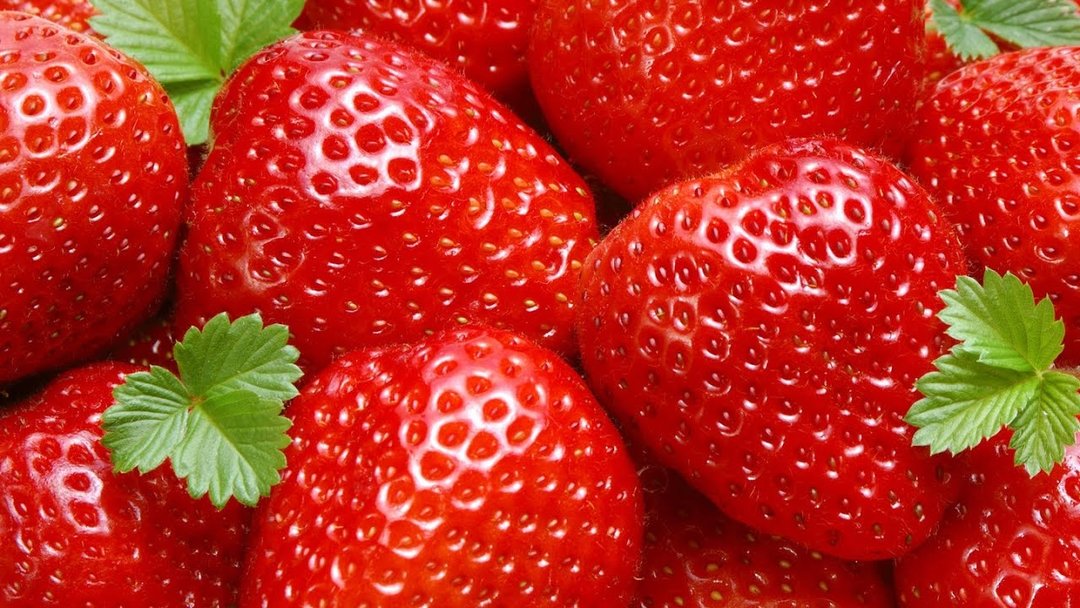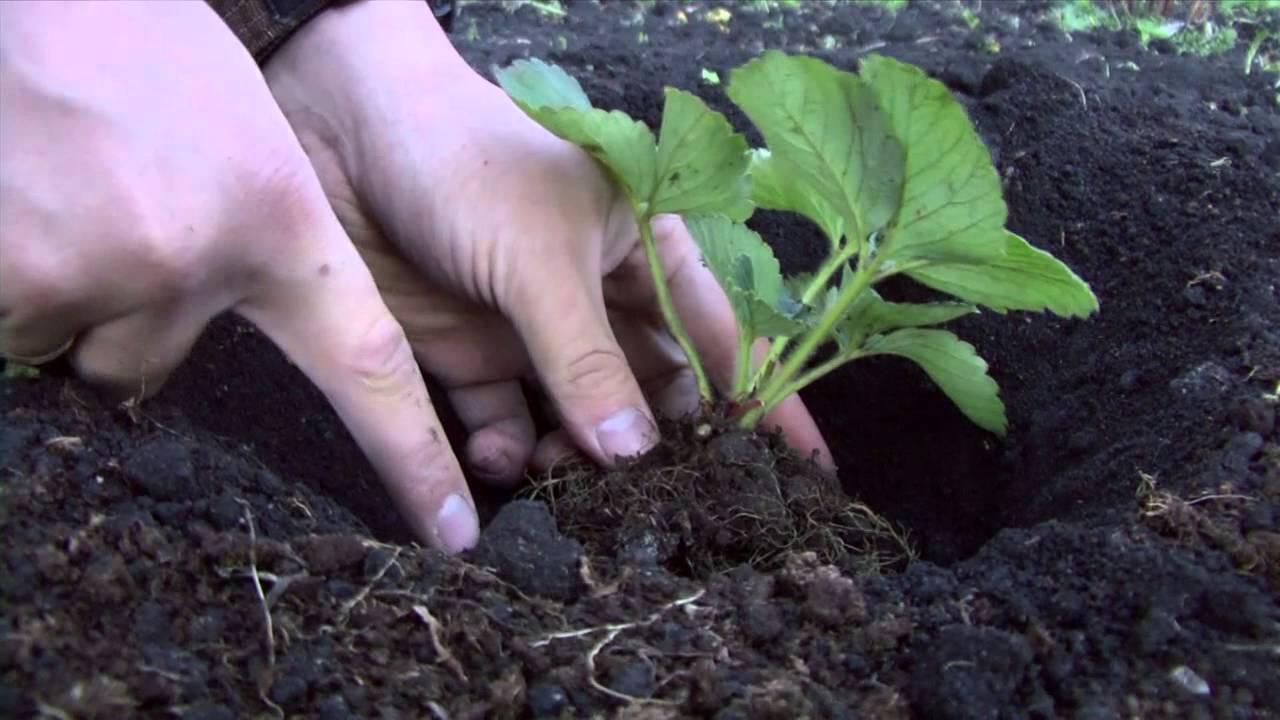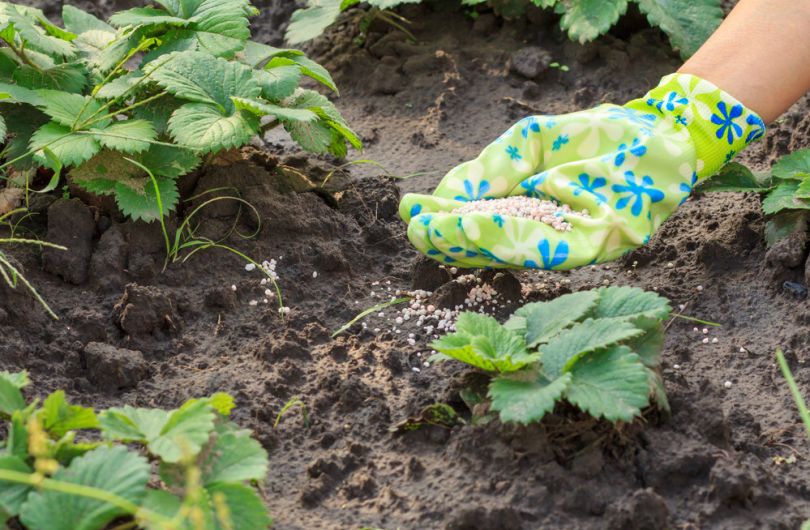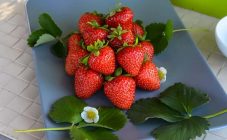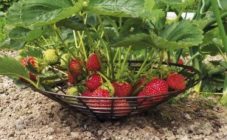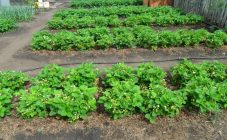Content:
Strawberry - a representative of the genus Strawberry, or Fragaria in Latin, got its name from the spherical shape of the berries. Differs in large size, three-toed leaves, oval or egg-shaped. The people have the following names: meadow, steppe, forest strawberries, hilly strawberries, polnitsa. Growing area - the territory of the Russian Federation, Western Europe and Crimea.
Further in the text, we will look at ways to grow large strawberries of the correct shape and keep their sweetness.
Characteristic features of strawberry varieties
Due to the fact that the berry has several varieties, it is worth noting the distinctive features in the following categories:
- By ripening time:
- early or late fruiting ("Malvina", "Octave", "Bohemia");
- multiple fruiting during the season ("Temptation", "Evi 2").
- By fruit size:
- large - from 40 to 100 ("Krymchanka", "Krasnoyarka", "Queen Elizabeth 2");
- medium - from 20 to 40 ("White Swede", "Maestro");
- small - from 4 to 15 years ("The Seasons", "Alexandria").
Reasons for sour berries and measures to return sweetness
To understand why strawberries are sour what to do in this situation, it is worth considering several factors:
- Lack of light - the taste of the berries depends on the light they receive: if the plant received heat and light for less than 9 hours, then the result will be a decrease in the percentage of sugar;
- Poor soil selection - strawberries love slightly acidic soil. If the soil has a high pH, limestone must be added and the error corrected; if it is poor in minerals and fertilizers, add compost with a predominance of silicon dioxide;
- Tightness - it is worth planting bushes at a distance of 20-25 cm so that they do not obscure each other and do not interfere with the development of "neighbors";
- The age of the bush - it is advisable to update the strawberry rows every 3-5 years, so as not to lose the amount of harvest;
- Unsuccessful planting time - it is advisable to plant a representative of the strawberry genus in the autumn, since it is then that the plant does not need to prepare for fruiting, you can calmly develop and grow; in case of planting from September to November, it is necessary to insulate the bushes with a 3 cm layer of straw, dry grass and wood ash;
- Early fruiting - in order for the bush to take root and adapt better, it is recommended to forbid it to bear fruit in the first year of life in the open field, tearing off all flowers and ovaries.
Reasons for small strawberries
Why are strawberries small what to do in this situation, for several reasons:
- The emergence of weed varieties - berries missed during picking become material for a new bush (due to the remaining seeds), which has small berries and interferes with pure varietal plants from developing comfortably. A similar reason shows why strawberries have large leaves and few berries;
- Not enough space - in addition to the appearance of unsweetened berries, a lack of space can lead to the fact that the berry begins to shrink;
- Old age - the older the bush, the more likely it is to get small berries;
- Poor resistance to weather and pests - to prevent a small harvest for this reason, you need to keep the mini-greenhouse closed until constant warmth comes.To reduce the attacks of parasites, it is advisable to carry out preventive measures by spraying the bushes with chemical solutions before flowering.
It is the cold weather that makes gardeners invent new options for planting strawberries, for example, the use of Dutch technology: growing seedlings in plastic bags.
Recommendations for choosing a variety
In order to choose the right variety for planting in the garden, it is necessary to outline the criteria by which it will be possible to find the most suitable variety of berry culture:
- strong immunity and high resistance to pests;
- high percentage of weather tolerance;
- neutral attitude to soil;
- high sugar content - up to 5 points on the scale of tasters;
- few whiskers and many fruits.
All of the above qualities, to one degree or another, are possessed by the varieties popular among gardeners: Victoria, Mashenka, Anapolis, Elizaveta.
Agrotechnics
Landing
To answer the question: how to grow strawberries in the country and achieve a high-quality harvest, it is necessary to plant bushes, alternating different varieties and keeping a distance of 20-25 cm between them.After planting and proper care, wait for the appearance and growth of the mustache. The next step is to thin out the bushes, leaving plants with less foliage and whiskers and more ovaries. The final step is to observe the appearance of the crop, removing weak specimens.
Breeding options
To grow a good, large and sweet crop, there are two options for increasing the number of plants in your garden plot:
- Mustache (outdoors):
- wait until the mustache is completely ripe;
- plant in the ground in the second decade of July or August;
- in the case of transplanting a bush, they must be taken with the land in which they grew initially, so that the plant does not notice the "move";
- plant in a prepared hole;
- fix with earth, water and loosen.
- Seeds (at home):
- sow future seedlings in the 2nd or 3rd month of the year;
- to dive into the garden the grown seedlings in the first decade of May.
- Seed (in the open field):
- plant seed in a special bed in June;
- cover with foil until the first shoots appear;
- after receiving the result, open the mini-greenhouse;
- to plant future bushes in new "houses" on an ongoing basis.
Planting a mustache in spring can result in a lot of strawberry leaves and few berries.
Sowing time can be carried out during the period of growing tomatoes.
Watering rules
For proper hydration, it is advisable to use not only different watering options, in accordance with the stage of development of the strawberry bush, but also listen to the following recommendations:
- before flowering - foliar watering can be carried out, carrying out the procedure before sunrise, so that the deciduous mass does not get sunburn;
- after flowering until the end of the harvest, they use the root method so that it is more comfortable for the representative of the flora to receive fertilizers and not harm their health and harvest.
Recommendations:
- In the process of watering, it is advisable to use rain or settled water. The temperature of the liquid must be at least 22 degrees.
- Watering is necessary either before or after sunset to keep the soil loose, airy and comfortable for growth and development.
- Since the plant goes shallow into the ground, therefore, it does not tolerate the dry period, watering should be carried out up to 2 times in 7 days, in the moderate period - up to 1 time in 7-10 days.
- After the harvest has ripened, the amount of watering must be reduced in order to avoid damage to the fruit.
Winter cleaning
It is advisable to start the process of harvesting the bush for wintering after the final setting of a low temperature, in order to avoid debate of the plant in case of the arrival of warm days. In the form of protection, it is worth using dry grass, straw, spruce branches, wood ash; the layer of mulch should be at least 15 cm. If the winter is cold and with little snow, then additionally cover it with plastic wrap, avoiding freezing of the bushes and, as a result, getting an ugly crop.
Before covering the strawberries, it is necessary to thoroughly weed out the soil, remove rotten and spoiled berries, cut off all dry and unhealthy leaves, mulch the area around the beds and apply fertilizers containing phosphorus and potassium, spray all plants with a solution of potassium permanganate to prevent diseases.
Feeding
It is advisable to apply fertilizer three times a year: in spring, autumn and summer.
In the first period, it is advisable to feed the bushes by foliar and sub-root methods. It is desirable to carry out procedures from 2 to 3 months of spring with nitrogen-containing fertilizers (chicken droppings, infusion of a vegetable character from a mullein) in order to improve the root system and create a favorable atmosphere for flowering and the appearance of ovaries.
The summer period involves the application of potassium-phosphorus fertilizer to help with the flowering and ripening season. In the autumn, it is recommended to feed the bushes with solutions like Azofoska or infusion of weeds. To prepare the fertilizer, it is advisable to chop the foliage, put it in a bucket or barrel and fill it with water, placing it in a warm place for 7 days.
Before adding additional food, it is recommended to inspect the bush for the presence of dry and old leaves and branches, loosen and water the soil.
It is advisable to plan the time for feeding, depending on the area where the summer cottage is located: the further south the berry is planted, the earlier the feeding is carried out.
Harvesting tips
The collection of fruits should be carried out after the berries are fully ripe, cutting them together with the stalk. It is advisable to carry out the procedure in the afternoon, if the weather is warm and dry, and in cloudy weather - before rain.
The presence of a tail will allow the crop to be stored longer. In the case of planning the transportation of berries over long distances, it is desirable that they be immature, then the transportation will be successful.
It is better to store the crop in a well-ventilated area in boxes.
Summing up, it is worth noting that information was provided that answered the questions: why the strawberries became small, what to do in this situation, what to do to make the strawberries large and sweet, and how to grow strawberries in the garden and get a good harvest, having studied and applied which in practice, you can not only collect a large number of tasty and large fruits per season, but also maintain a high-quality result for several years.
